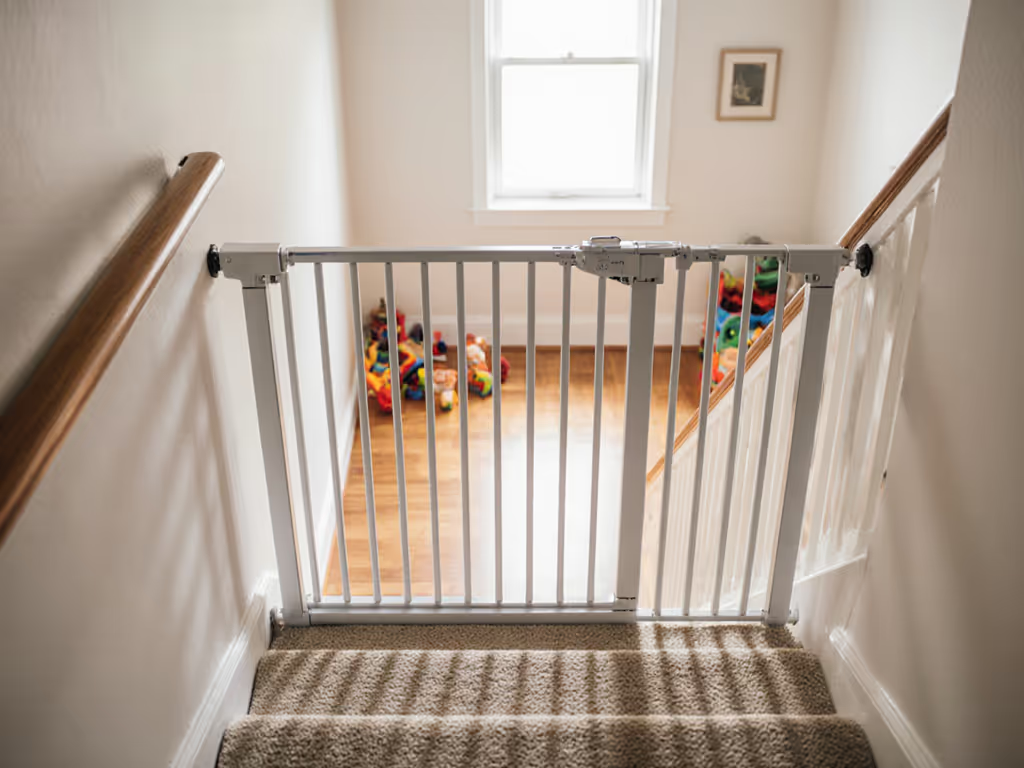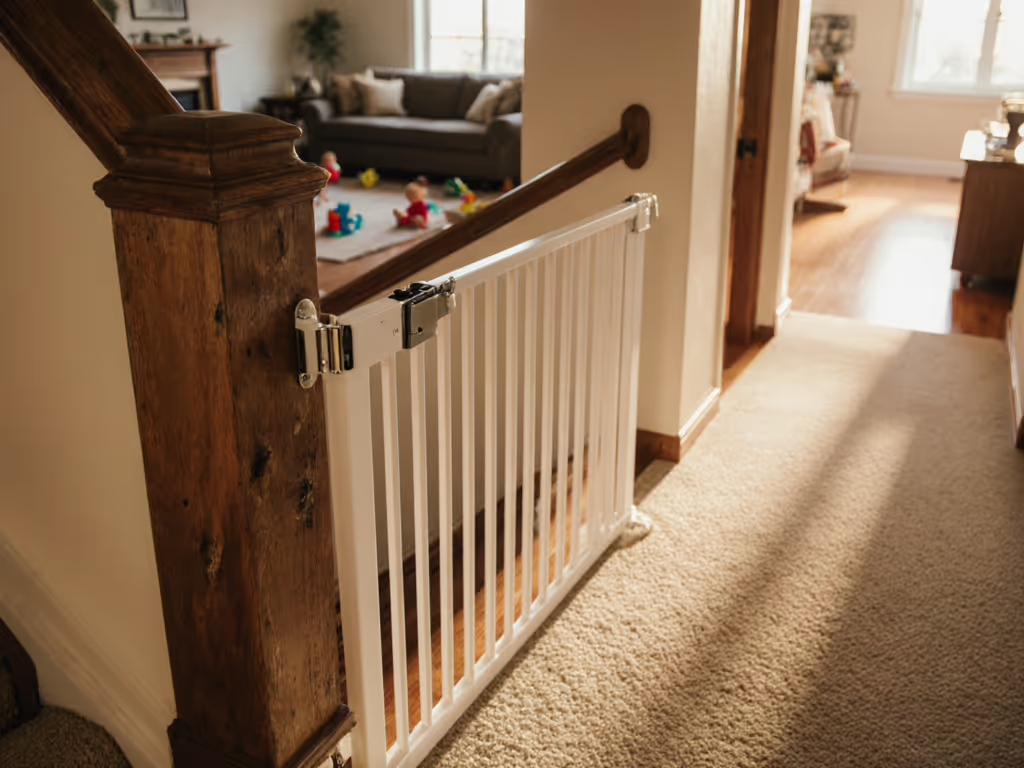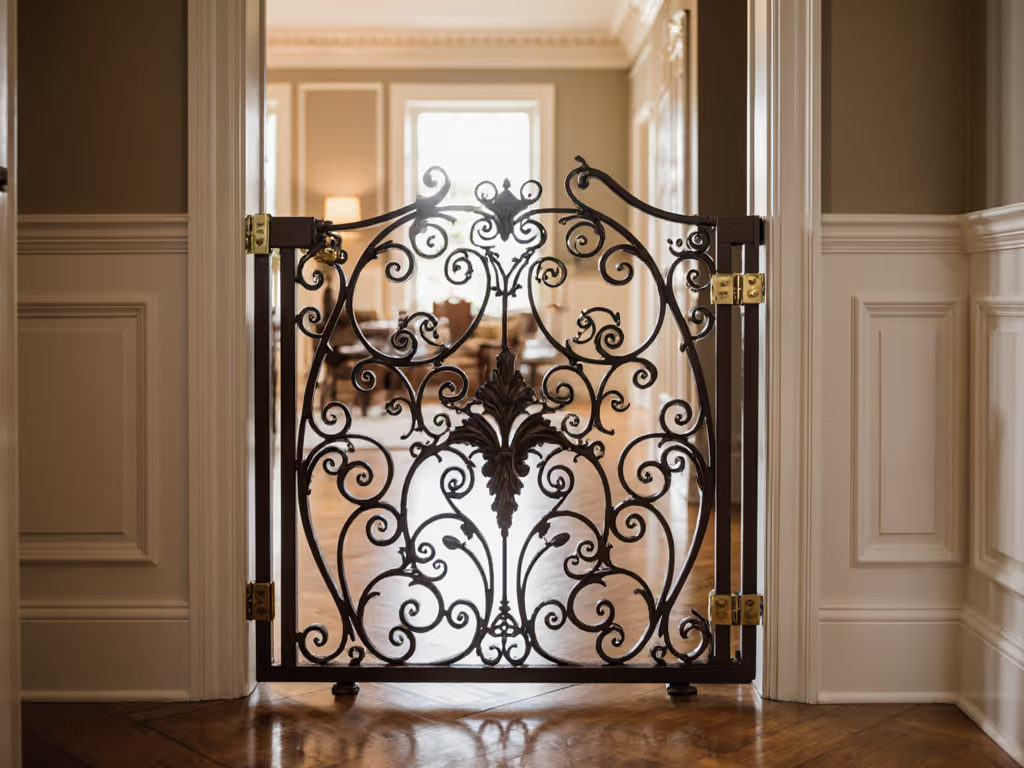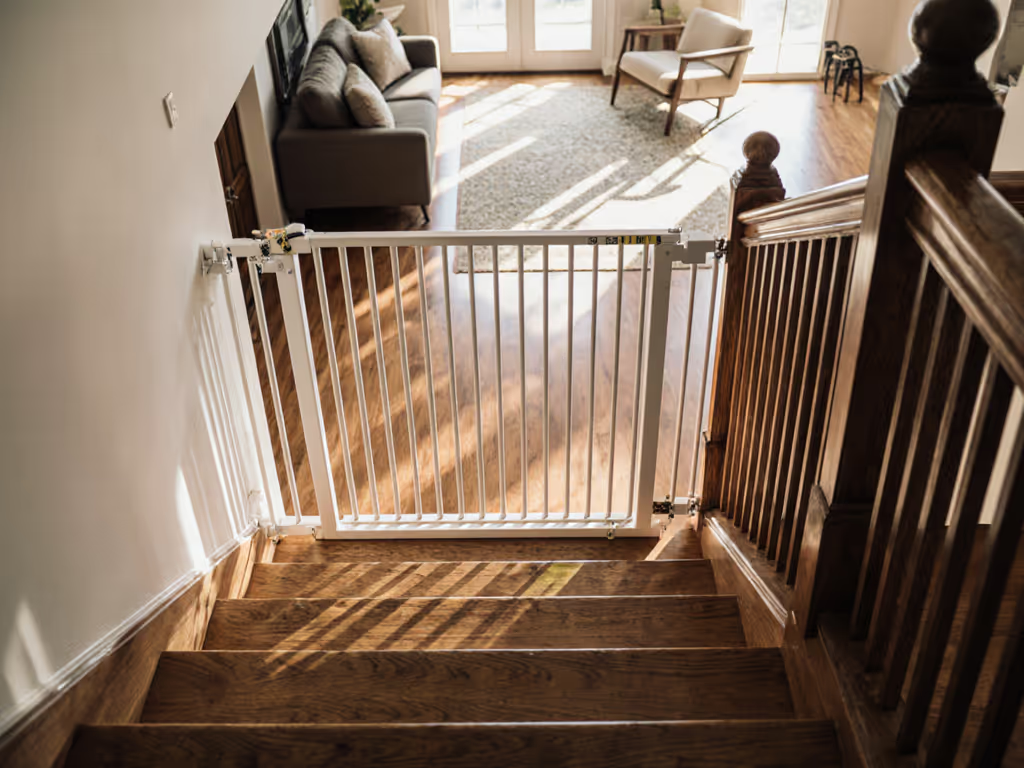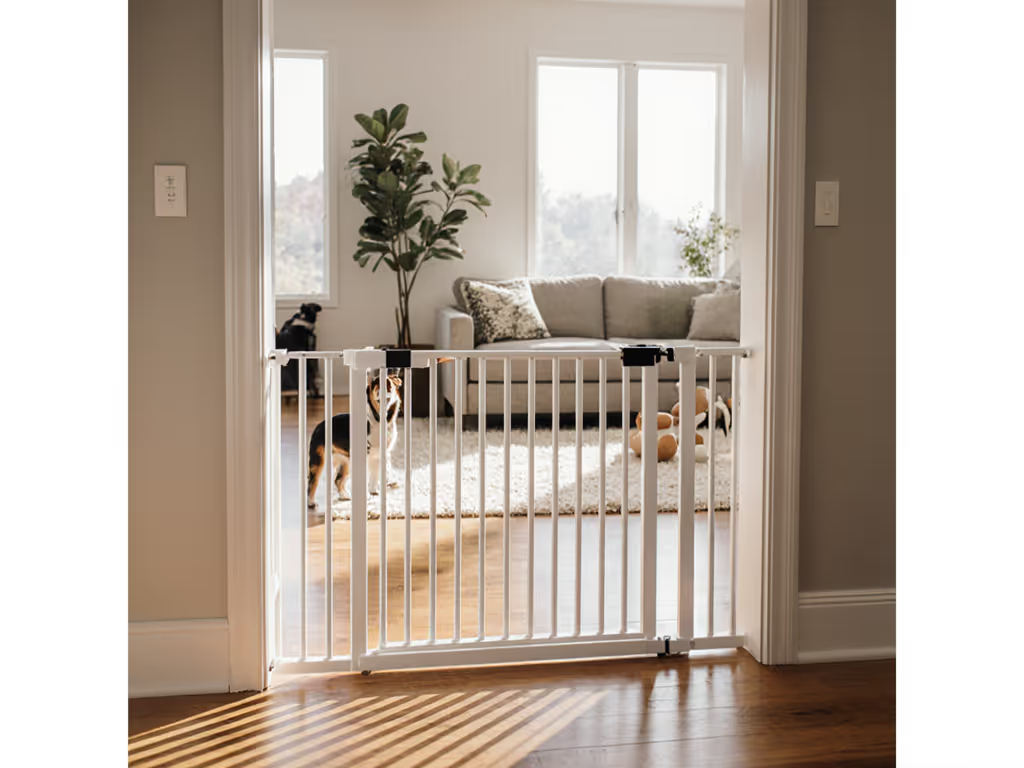
What Is a Top-of-Stairs Gate? Complete Overview
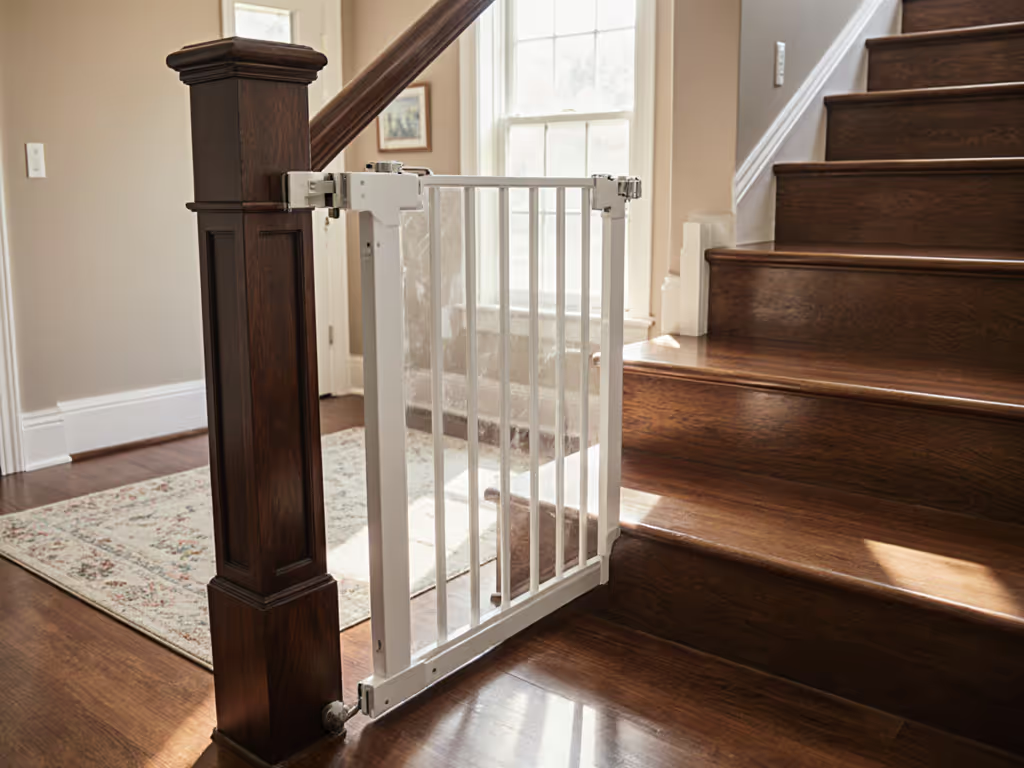
Every year, over 120,000 young children in the United States are treated for stair-related injuries. For families with infants or toddlers, the risk of serious falls is a constant concern. Top-of-stairs gates offer a proven solution, helping create a safer home by blocking a leading cause of childhood accidents and giving caregivers much-needed peace of mind.
Key Takeaways
| Point | Details |
|---|---|
| Safety First | Always choose hardware-mounted top-of-stairs gates for maximum stability and protection against falls. |
| Essential Features | Look for gates with secure mounting, advanced locking systems, and certification to safety standards. |
| Installation Matters | Proper installation using wall studs is critical; regular checks for wear and stability are essential. |
| Prevention Over Supervision | Avoid relying solely on supervision or temporary solutions; dedicated gates are crucial for child safety around stairs. |
Defining Top-of-Stairs Gates and Essentials
Parents and caregivers know staircases pose serious risks for curious, mobile infants and toddlers. A top-of-stairs gate is a specialized safety barrier designed to prevent young children from accessing potentially dangerous staircase areas, creating a critical protective boundary between exploration and potential injury.
Typically intended for children aged 6 months to 2 years, these safety devices serve a fundamental protective function. Unlike pressure-mounted gates used in doorways, top-of-stairs gates require hardware mounting - a secure installation method that attaches directly into wall studs or door frames. This critical mounting approach ensures maximum stability and prevents accidental dislodging, which could result in dangerous falls.
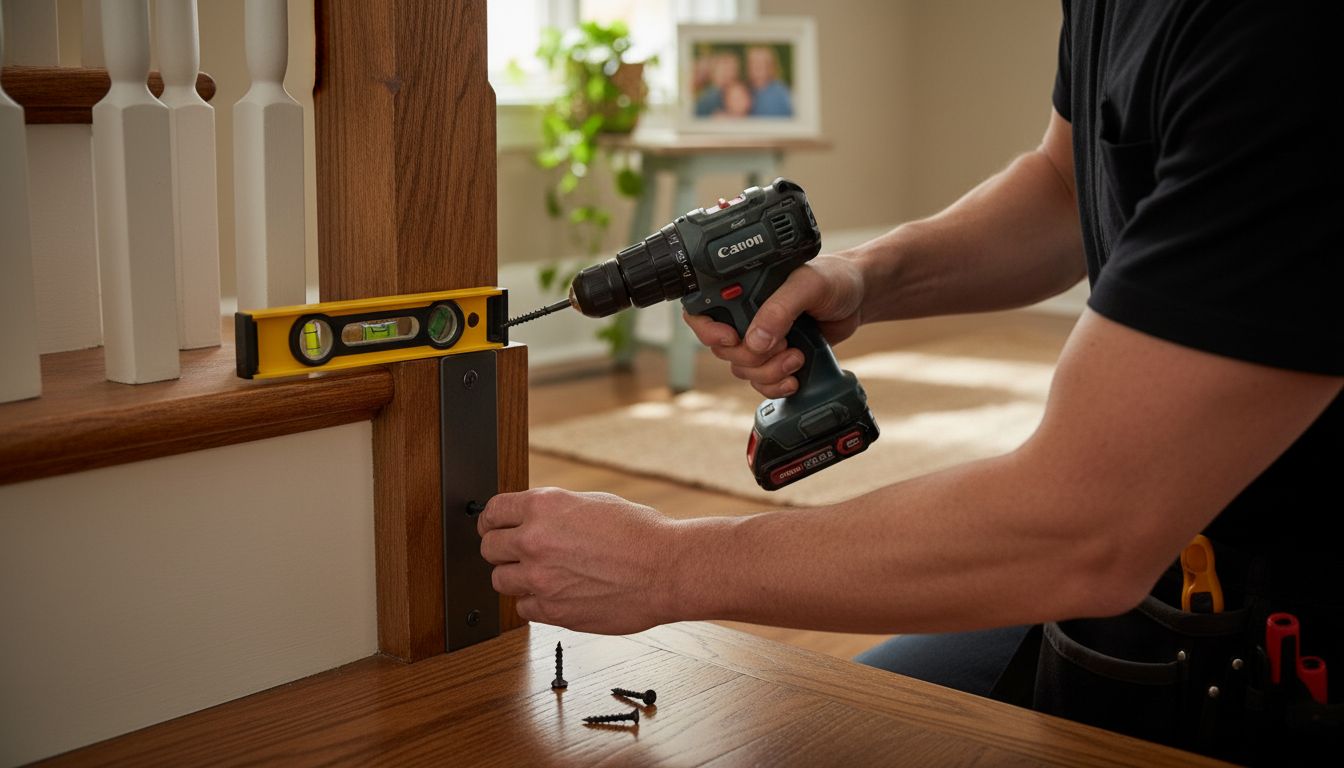
Key features of an effective top-of-stairs gate include:
- Rigid metal or durable wood construction
- Secure hardware mounting mechanism
- Minimum height of 22 inches
- Vertical slat spacing less than 3 inches
- Self-closing and auto-locking capabilities
- Easy one-hand operational design
When selecting a top-of-stairs gate, prioritize safety certifications and robust engineering. Look for products meeting ASTM safety standards, which guarantee rigorous testing for child protection. Remember: not all gates are created equal, and investing in a high-quality, properly installed barrier can literally prevent life-changing accidents.
Types of Top-of-Stairs Gates Explained
When it comes to protecting children from staircase hazards, not all safety gates are created equal. Hardware-mounted gates and pressure-mounted gates represent the two primary types of safety barriers, each designed with specific use cases and safety considerations in mind.
Hardware-mounted gates are the gold standard for top-of-stairs protection. These gates require permanent installation using screws directly into wall studs or door frames, creating an immovable barrier that prevents accidental dislodging. Professional child safety experts universally recommend hardware-mounted gates for staircase locations because they provide unparalleled stability and eliminate the risk of unexpected gate movement that could lead to dangerous falls.
In contrast, pressure-mounted gates rely on tension created by spring-loaded mechanisms to stay in place. While convenient for doorways or bottom-of-stairs applications, these gates are explicitly not recommended for top-of-stairs use. Their installation method lacks the secure anchoring necessary to prevent potential accidents, making them a risky choice for high-traffic staircase areas.
Key differences between gate types include:
Here's a comparison of hardware-mounted and pressure-mounted gates for stair safety:
| Feature | Hardware-Mounted Gate | Pressure-Mounted Gate |
|---|---|---|
| Installation | Screws into wall studs | Tension-based, no screws |
| Recommended Location | Top of stairs | Doorways<br>Bottom of stairs |
| Stability | Very high | Moderate |
| Child Safety | Maximum protection | Not safe for stairs |
| Installation Complexity | More complex | Simple, tool-free |
| Portability | Permanent<br>Not portable | Easily moved or adjusted |
| Meets ASTM Standards | Often yes | Sometimes |
-
Hardware-Mounted Gates
- Permanently screwed into wall studs
- Maximum stability
- Recommended for top of stairs
- More complex installation
-
Pressure-Mounted Gates
- Tension-based installation
- Easy to move and adjust
- Suitable for doorways and room dividers
- NOT safe for top of stairs
Choosing the right gate is about understanding your specific safety needs. For staircases, always prioritize hardware-mounted options that provide a rock-solid barrier between curious children and potential injury.
Key Safety Features and Mechanisms
When it comes to child safety, top-of-stairs gates are far more than simple barriers - they are sophisticated protective devices engineered with multiple critical safety mechanisms. The most crucial aspect is preventing unintended access to potentially dangerous areas while ensuring the gate itself does not become a hazard.
Certification standards from ASTM and JPMA provide essential guidelines for gate design and safety. These standards mandate specific requirements like preventing finger entrapment, eliminating strangulation risks, and ensuring robust structural integrity. A high-quality top-of-stairs gate must have vertical slat spacing less than 3 inches, preventing children from squeezing through or getting stuck, and should be installed close to the floor to block potential crawling attempts.
Key safety mechanisms and design features include:
-
Hardware Mounting
- Secure attachment to wall studs
- Eliminates gate movement or dislodging
- Provides maximum stability
-
Advanced Locking Systems
- One-handed release mechanisms
- Childproof locks
- Automatic self-closing functions
-
Structural Safety Elements
- No sharp edges
- Rounded corners
- Durable materials resistant to child tampering
Parents should also be vigilant about ongoing maintenance. Regularly inspect gates for wear, loose screws, or potential weak points. A gate's effectiveness diminishes if it's damaged or improperly maintained. Always follow manufacturer instructions for installation and use, and remember that no safety device is a substitute for active adult supervision.
Installation Requirements and Best Practices
Top-of-stairs gate installation is not a one-size-fits-all process but a critical safety procedure that demands precision, careful planning, and attention to specific structural requirements. Professional safety experts emphasize that improper installation can compromise the entire protective function of the gate, potentially creating more risk than protection.
The fundamental requirement for top-of-stairs gates is hardware mounting, which means permanently securing the gate using screws directly into wall studs or door frames. This process requires specific tools, careful measurement, and an understanding of your home's architectural structure. Homeowners should locate solid wall studs using a stud finder, ensure level mounting, and verify that the gate fits snugly without gaps that could allow a child to squeeze through.
Key installation considerations include:
-
Pre-Installation Checklist
- Measure staircase width accurately
- Identify solid mounting points
- Check for level surface
- Gather necessary tools
-
Mounting Requirements
- Use minimum two mounting points
- Drill directly into wall studs
- Ensure gate is perpendicular to wall
- Leave no more than 3 inches of space between gate and wall
-
Safety Verification Steps
- Test gate stability after installation
- Verify no wobbling or movement
- Check lock mechanism works smoothly
- Confirm child cannot push or manipulate gate
Remember that gate effectiveness is temporary. As children grow and become more agile, regularly reassess the gate's utility. Most safety experts recommend removing gates once children can open them or climb over, typically around 2-3 years old. Regular maintenance, including checking screws and hardware, ensures continued protection during those critical early years.
Comparing Top-of-Stairs Gates to Alternatives
Parents and caregivers face multiple options when considering child safety barriers, but top-of-stairs gates stand in a unique category that cannot be easily substituted by alternative solutions. Unlike generic safety measures, these specialized gates are engineered specifically to prevent potentially fatal staircase accidents.
Alternative child containment strategies each come with significant limitations. Temporary barriers like makeshift furniture blockades or loose baby blankets provide minimal protection and can be easily displaced by curious children. Supervision-only approaches are unrealistic, as even the most attentive parents cannot maintain constant visual contact. Portable play yards offer contained spaces but do not address the specific staircase hazard, leaving dangerous access points completely unprotected.
Comparing safety solutions reveals clear advantages of dedicated top-of-stairs gates:
-
Top-of-Stairs Gates
- Permanent, secure installation
- Specifically designed for staircase protection
- Meeting professional safety standards
- Engineered to prevent child access
-
Alternative Methods
- Furniture blocking: Unstable
- Supervision only: Unreliable
- Temporary barriers: Easily bypassed
- Portable play yards: Limited protection
Ultimately, investing in a professionally designed, hardware-mounted top-of-stairs gate represents the most responsible approach to child safety. These gates are not just accessories but critical protective infrastructure that can prevent life-altering accidents during a child's most exploratory and vulnerable developmental stages.
Secure Your Home with the Right Top-of-Stairs Gate Today
Understanding the critical importance of a properly installed hardware-mounted top-of-stairs gate can give you peace of mind knowing your child is protected from dangerous falls. This article highlights common challenges like choosing the right gate with certified safety features and mastering the often-complex installation process. Parents face real concerns about stability, childproof locking mechanisms, and ensuring the gate fits securely to block all potential access points. Your child’s safety depends on overcoming these issues without compromise.
Discover how you can simplify this journey by exploring trusted, expert-curated advice and in-depth reviews at baby safety gates world. Here you will find comprehensive support to select the most effective gate meeting ASTM standards, tips for safe hardware mounting, and maintenance guides tailored for your home environment. Don't wait until a close call happens. Take action now by visiting top-of-stairs gate solutions and start protecting your curious little explorer with confidence. Your safest choice is only a click away.
Frequently Asked Questions
What is a top-of-stairs gate?
A top-of-stairs gate is a safety barrier specifically designed to prevent infants and toddlers from accessing stairs, providing a critical safety measure to avoid potential accidents.
How are hardware-mounted gates different from pressure-mounted gates?
Hardware-mounted gates require permanent installation using screws into wall studs, providing maximum stability, while pressure-mounted gates use tension to stay in place and are not recommended for top-of-stairs use due to their lack of secure anchoring.
What are key safety features to look for in a top-of-stairs gate?
Key safety features include durable construction, hardware mounting, vertical slat spacing less than 3 inches, self-closing mechanisms, and childproof locks. It’s also essential to ensure the gate meets ASTM safety standards.
How should I install a top-of-stairs gate?
To install a top-of-stairs gate, you should accurately measure the staircase width, locate solid wall studs for mounting, ensure the gate is level, and follow all manufacturer instructions. Regularly inspect the installation for stability and proper function.

